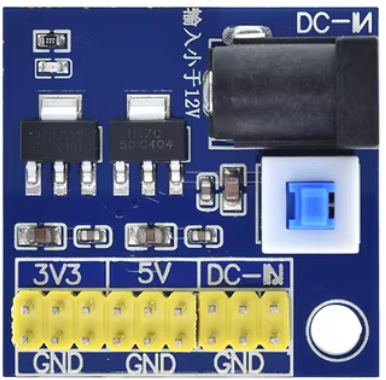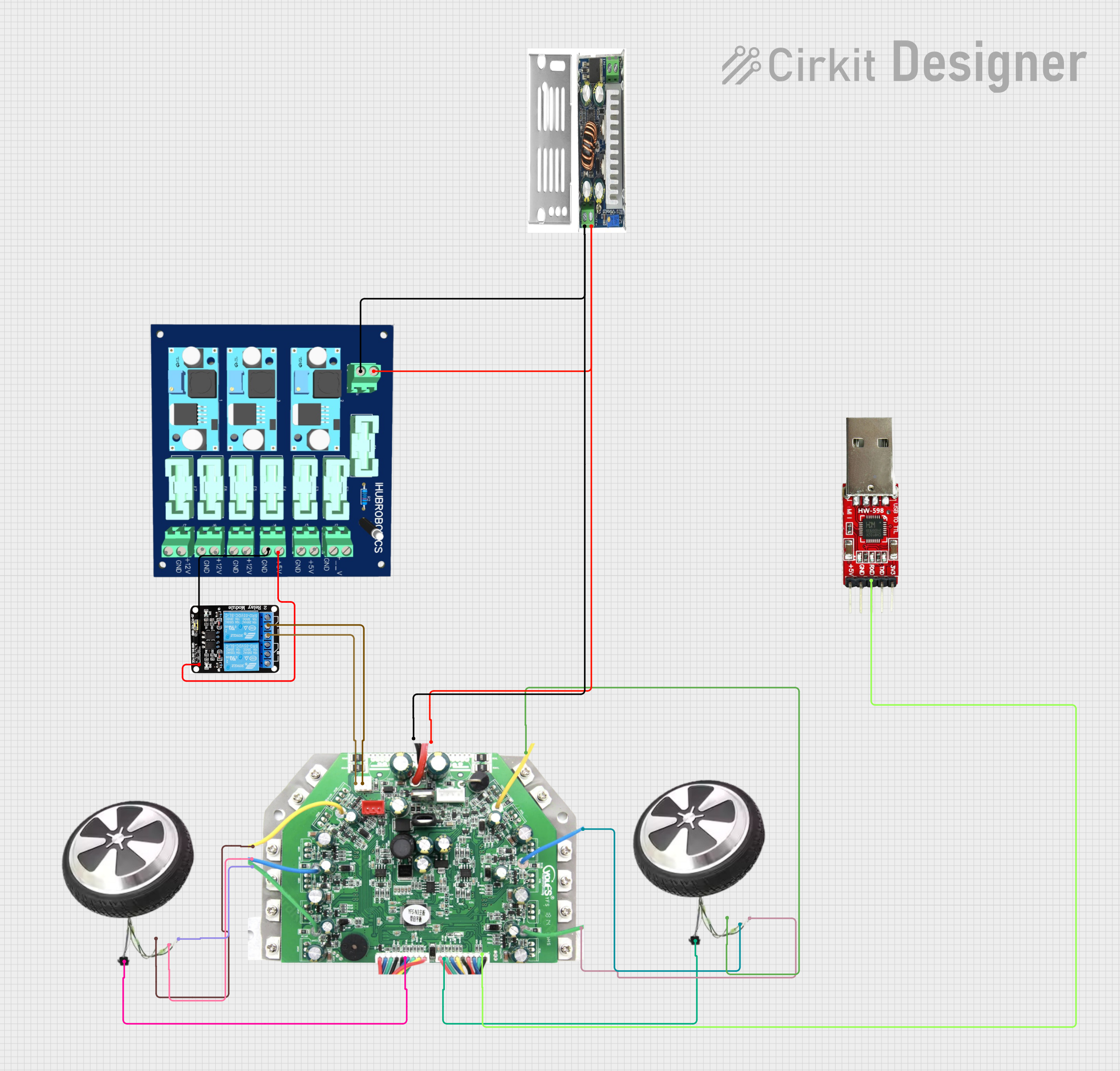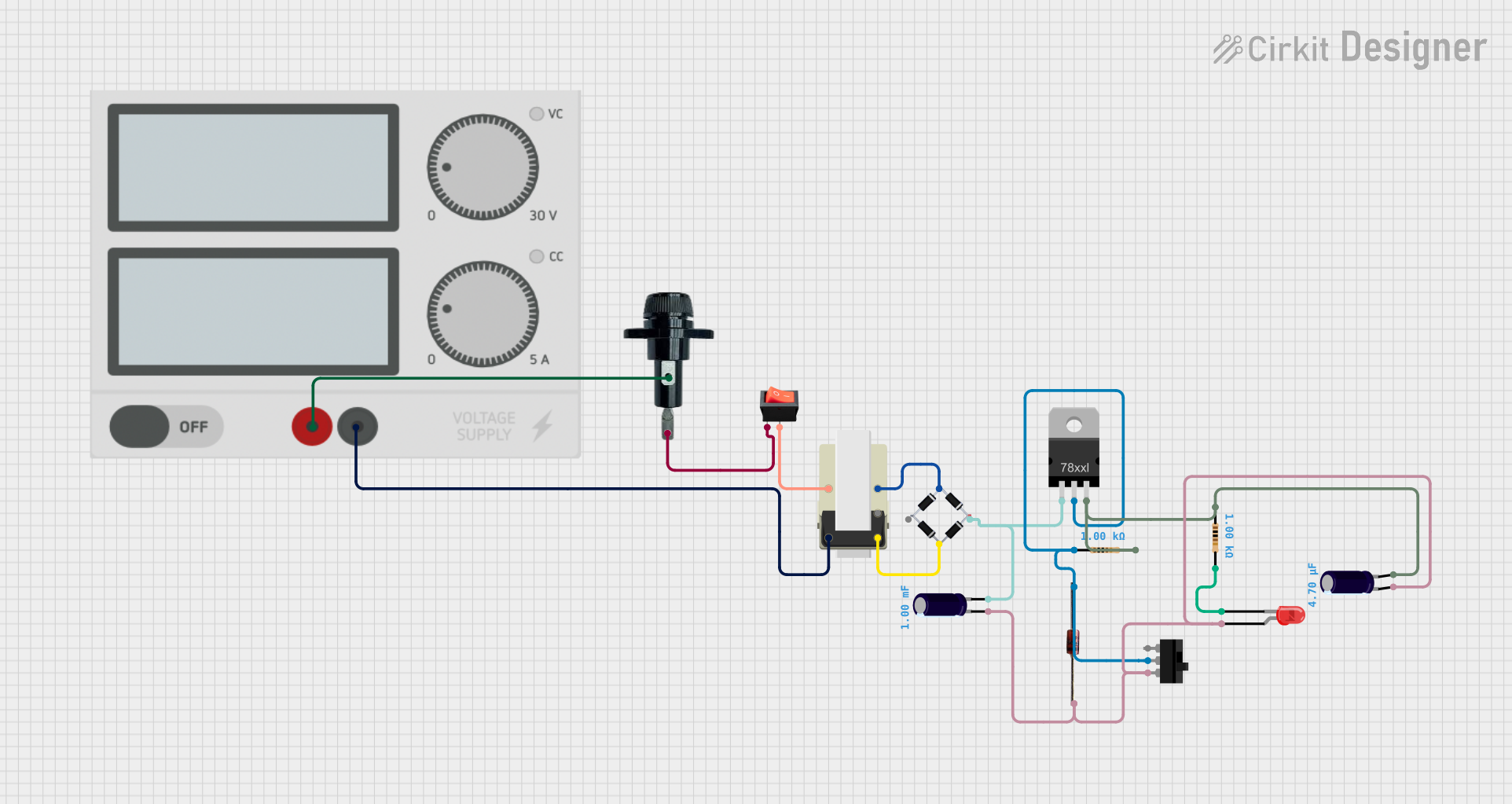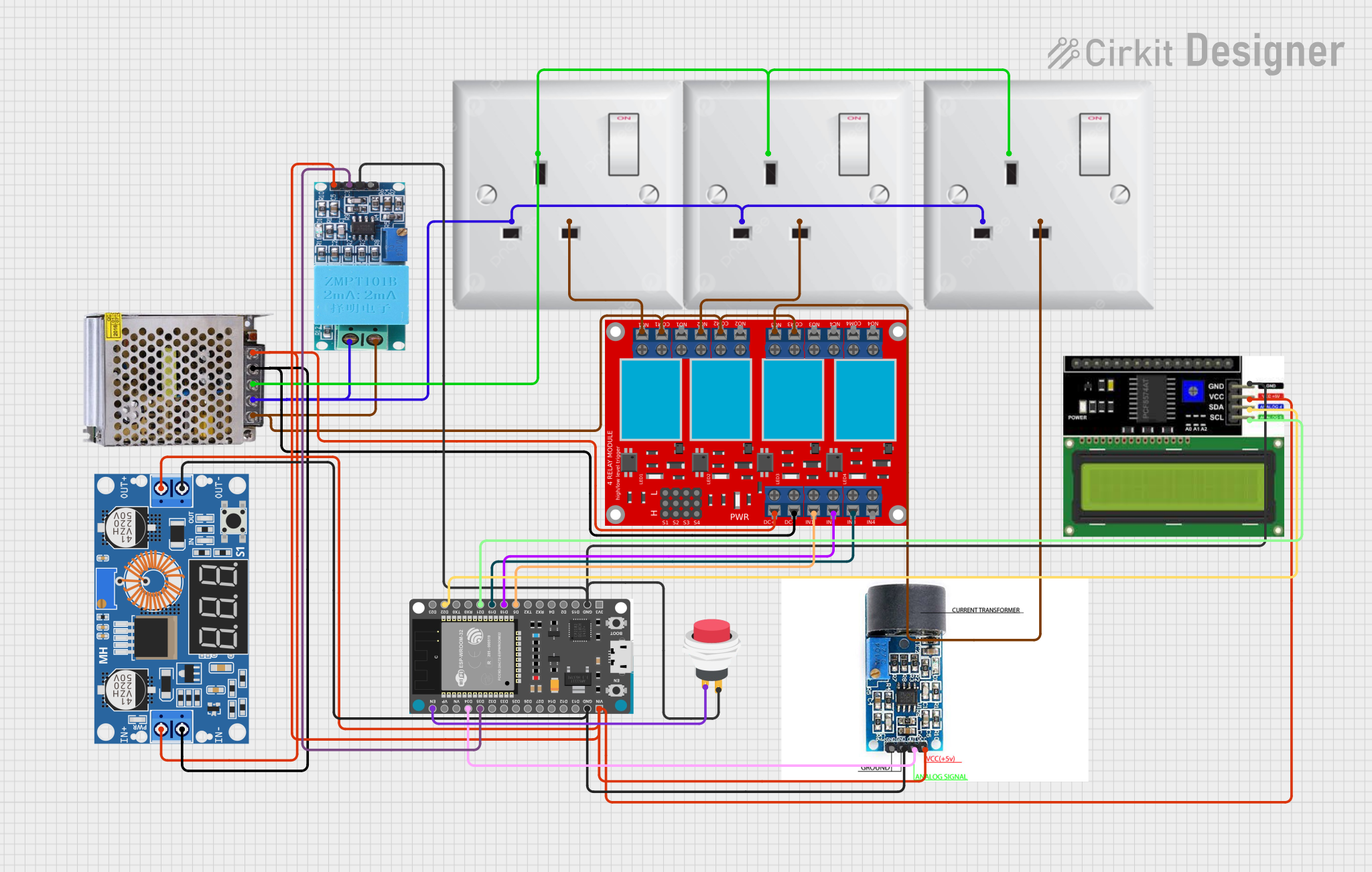
How to Use tzt do to dc converter: Examples, Pinouts, and Specs

 Design with tzt do to dc converter in Cirkit Designer
Design with tzt do to dc converter in Cirkit DesignerIntroduction
The Tzt DO to DC converter is a power conversion module designed to transform a direct output (DO) from a Tzt device into a stable direct current (DC) voltage. This component is essential for ensuring that electronic circuits or devices receive a consistent and reliable power supply, even when the input voltage fluctuates.
Explore Projects Built with tzt do to dc converter

 Open Project in Cirkit Designer
Open Project in Cirkit Designer
 Open Project in Cirkit Designer
Open Project in Cirkit Designer
 Open Project in Cirkit Designer
Open Project in Cirkit Designer
 Open Project in Cirkit Designer
Open Project in Cirkit DesignerExplore Projects Built with tzt do to dc converter

 Open Project in Cirkit Designer
Open Project in Cirkit Designer
 Open Project in Cirkit Designer
Open Project in Cirkit Designer
 Open Project in Cirkit Designer
Open Project in Cirkit Designer
 Open Project in Cirkit Designer
Open Project in Cirkit DesignerCommon Applications and Use Cases
- Powering microcontrollers, sensors, and other low-power devices.
- Voltage regulation in battery-powered systems.
- Providing stable DC voltage for portable electronics.
- Applications in robotics, IoT devices, and embedded systems.
Technical Specifications
Below are the key technical details of the Tzt DO to DC converter:
| Parameter | Value |
|---|---|
| Input Voltage Range | 4.5V to 28V |
| Output Voltage Range | 0.8V to 20V (adjustable) |
| Maximum Output Current | 3A (with proper heat dissipation) |
| Efficiency | Up to 92% |
| Switching Frequency | 150 kHz |
| Operating Temperature | -40°C to +85°C |
| Dimensions | Compact, varies by model |
Pin Configuration and Descriptions
The Tzt DO to DC converter typically has the following pin layout:
| Pin Name | Description |
|---|---|
| VIN | Input voltage pin (connect to the DO source). |
| GND | Ground pin (common ground for input and output). |
| VOUT | Output voltage pin (connect to the load). |
| ADJ | Voltage adjustment pin (used to set output voltage). |
Usage Instructions
How to Use the Component in a Circuit
Connect the Input Voltage (VIN):
Attach the VIN pin to the direct output (DO) source. Ensure the input voltage is within the specified range (4.5V to 28V).Connect the Ground (GND):
Connect the GND pin to the common ground of your circuit.Set the Output Voltage (VOUT):
- Use the ADJ pin to adjust the output voltage. This is typically done by turning a small potentiometer on the module.
- Measure the output voltage using a multimeter while adjusting to ensure it matches your desired value.
Connect the Load:
Attach the VOUT pin to the device or circuit you want to power. Ensure the load does not exceed the maximum output current (3A).
Important Considerations and Best Practices
- Heat Dissipation: If the converter is operating near its maximum current rating, ensure proper heat dissipation by attaching a heatsink or providing adequate airflow.
- Input Voltage: Always verify that the input voltage is within the specified range to avoid damaging the module.
- Output Voltage Adjustment: Adjust the output voltage carefully to prevent overvoltage, which could damage connected devices.
- Polarity: Double-check the polarity of all connections to avoid short circuits or damage to the module.
Example: Using the Tzt DO to DC Converter with an Arduino UNO
Below is an example of how to use the Tzt DO to DC converter to power an Arduino UNO:
- Set the output voltage of the converter to 5V using the ADJ pin.
- Connect the VIN pin to a 12V battery or other DO source.
- Connect the GND pin to the common ground of the circuit.
- Connect the VOUT pin to the Arduino UNO's 5V input pin.
Sample Arduino Code
Here is a simple Arduino sketch to blink an LED, powered by the Tzt DO to DC converter:
// This code blinks an LED connected to pin 13 of the Arduino UNO.
// Ensure the Tzt DO to DC converter is set to 5V output to power the Arduino.
void setup() {
pinMode(13, OUTPUT); // Set pin 13 as an output pin
}
void loop() {
digitalWrite(13, HIGH); // Turn the LED on
delay(1000); // Wait for 1 second
digitalWrite(13, LOW); // Turn the LED off
delay(1000); // Wait for 1 second
}
Troubleshooting and FAQs
Common Issues and Solutions
No Output Voltage:
- Cause: Input voltage is not connected or is outside the specified range.
- Solution: Verify the input voltage and ensure proper connections.
Output Voltage is Incorrect:
- Cause: The ADJ pin is not set correctly.
- Solution: Use a multimeter to measure the output voltage and adjust the potentiometer.
Overheating:
- Cause: The load is drawing more current than the module's maximum rating.
- Solution: Reduce the load or improve heat dissipation with a heatsink or fan.
Module Not Working After Connection:
- Cause: Incorrect polarity or short circuit.
- Solution: Double-check all connections and ensure proper polarity.
FAQs
Q: Can the Tzt DO to DC converter be used with a solar panel?
A: Yes, as long as the solar panel's output voltage is within the input range of the converter.
Q: How do I know if the module is overheating?
A: If the module becomes too hot to touch, it is likely overheating. Use a heatsink or reduce the load.
Q: Can I use this converter to charge a battery?
A: Yes, but ensure the output voltage and current are suitable for the battery type and follow proper charging guidelines.
Q: Is the output voltage stable under varying loads?
A: Yes, the Tzt DO to DC converter is designed to provide a stable output voltage even with varying loads, within its rated capacity.